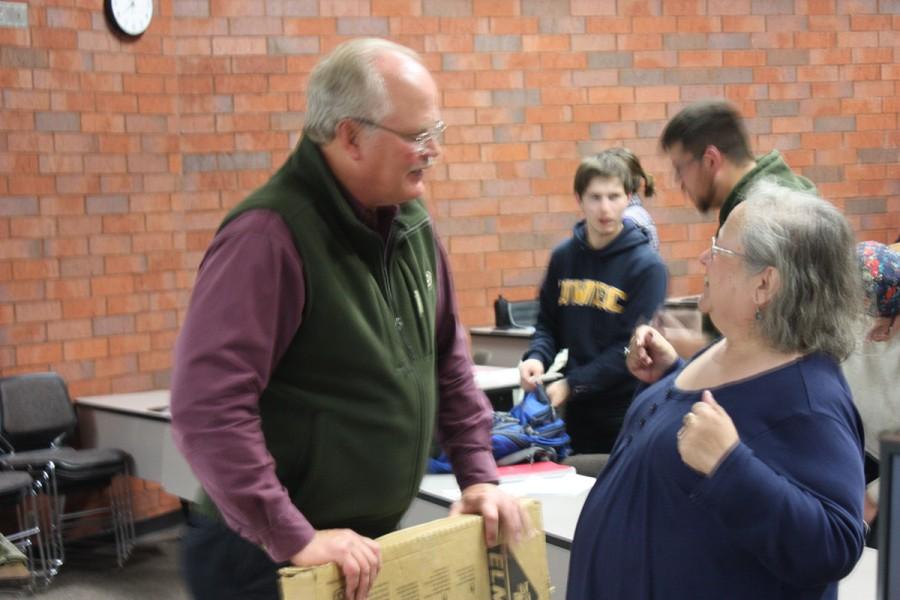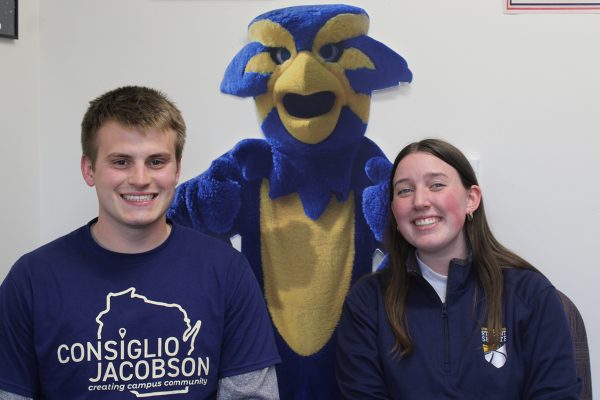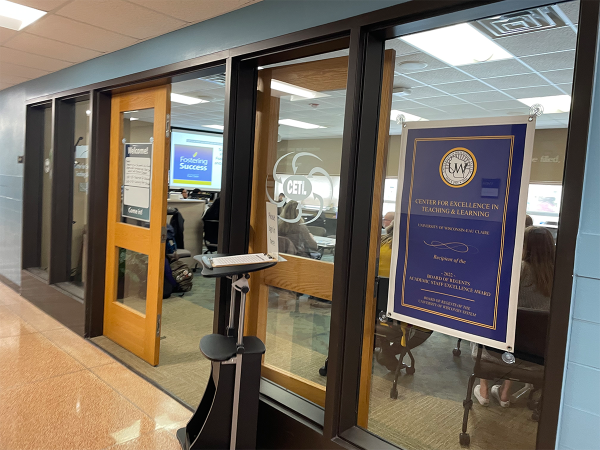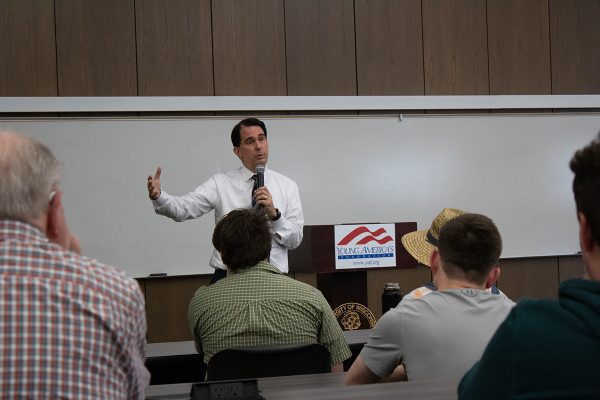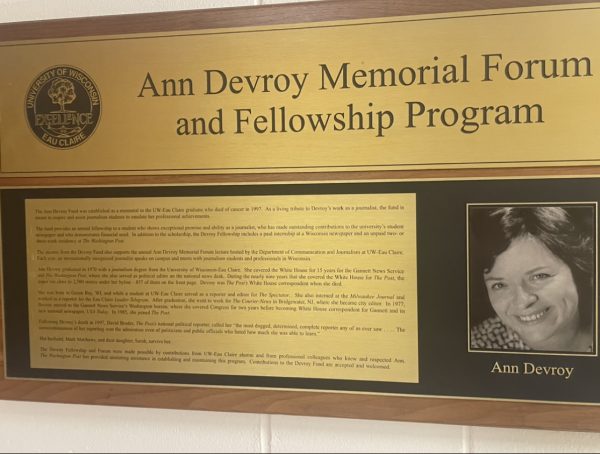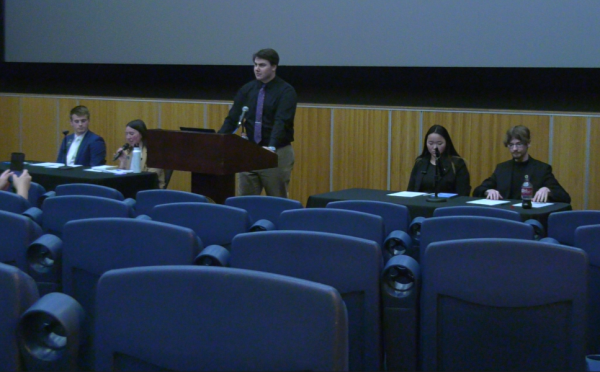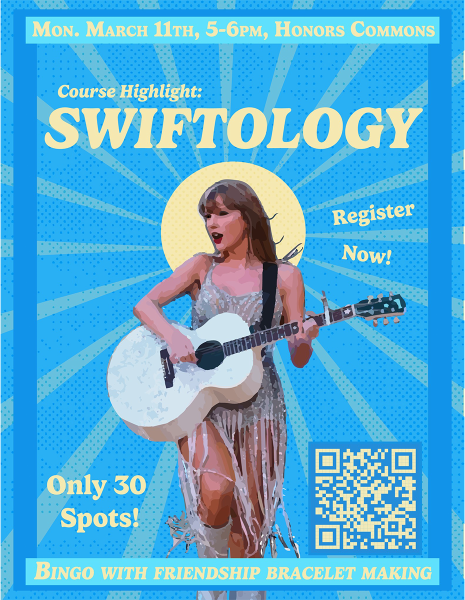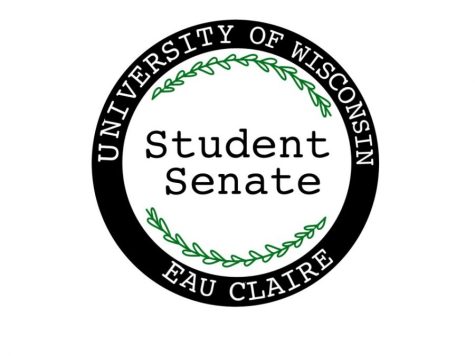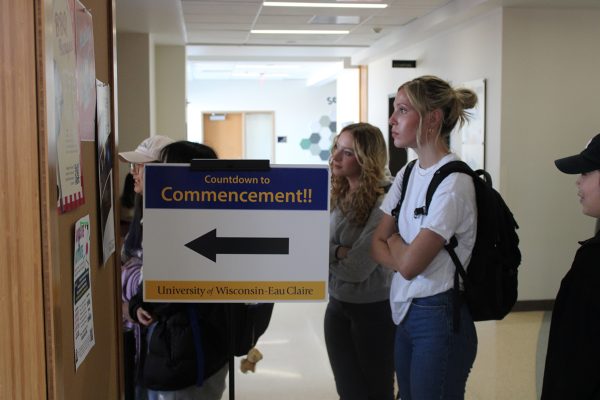Dealing with diversity
Informal student coalition proposes curriculum changes through protest
More stories from Sam Martinez
Photo by Sam Martinez
Former State SenatorDale Schultz, R-Richland Center, stays late after his presentation to speak with Margaret Cameron of Eau Claire about education.
One of UW-Eau Claire’s four guidepost goals for 2015-16 is to increase enrollment to 20 percent students of color and eliminating the opportunity gap.
However, UW-Eau Claire junior Ka Vue said unless curriculum changes are made, reaching the 20 percent goal will only lead to a more divided campus. Vue is a member of an informal student coalition that has been sending the Provost and the Chancellor a letter with proposed curriculum changes every day for the past few weeks.
“The thing I think a lot of people don’t understand is very correlated with campus climate,” Vue said.
Chancellor James C. Schmidt said he was first handed the letter after a UW System listening session and it was explained to him. Since then, the same letter has been dropped off every day and he has forwarded it to the Equity, Diversity and Inclusivity team on staff. Schmidt said the letter raises some important issues and he would like to talk with the coalition.
However, since the group Vue is a part of is informal, Schmidt said he is uncertain of who to be in contact with and the coalition has not set up a meeting yet.
“I would rather have a conversation about something than just get something delivered each day,” Schmidt said. “I’d rather be able to hear directly from them what their concerns are.”
The members of the coalition are tired of meetings, Vue said. She said sending a letter each day is a passive aggressive form of protest.
Ashley Sukhu, the outreach/inclusivity coordinator for Student Senate is not a part of the coalition, but has seen the letter. She said there are over 15 diversity groups on campus that meet often and generate a lot of great ideas.
At the beginning of the semester, Sukhu said these groups get the ball rolling, but at some point along the way it seems to stop.
“(Student diversity groups) have a lot of meetings,” Sukhu said. “But it doesn’t feel like we are making as much progress as we should be.
Although the university has a cultural diversity requirement, Vue said it is not effective or adequate at addressing many of the problems facing the campus. Vue said she has fulfilled her cultural diversity credit, but didn’t learn anything from it. She said she would like to see that requirement removed and replaced with something that educates students on other issues related to diversity.
“A lot of people are graduating without knowing what the actual definition of racism is,” Vue said.
Another issue the coalition has raised is the need for educated faculty that are able to facilitate classroom discussion and call out intolerant contributions, Vue said. If the university wants to create a safer environment, Vue said faculty must either be already competent in equity, diversity and inclusivity issues or they should complete mandatory training.
Included as a bullet point on the EDI guidepost goal implementation was “strategies for faculty and staff EDI contributions in promotion and tenure decisions.”
“There will be expectations around work on EDI issues and competency as part of the core on what (faculty) is evaluated on,” Schmidt said.
It is too early to say when the stated goals will be met, Schmidt said. Right now, a group of people have two months to work on how to implement these changes and a secondary advisory group is providing feedback.

